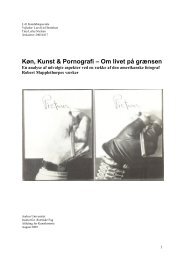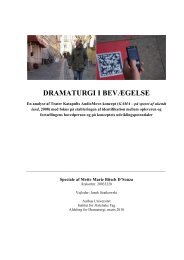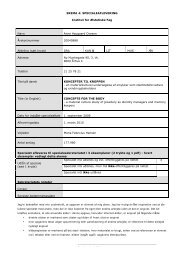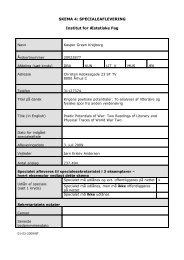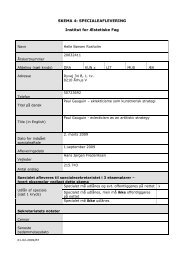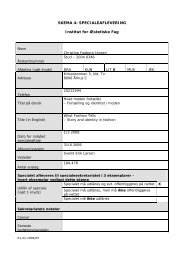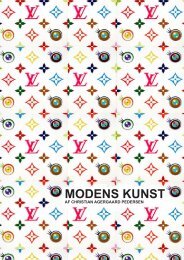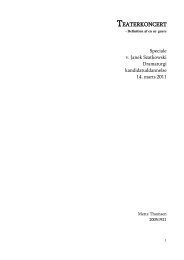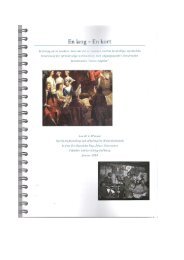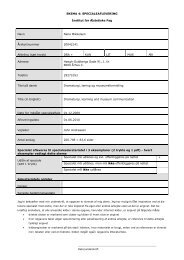2900 Happiness - Aarhus Universitet
2900 Happiness - Aarhus Universitet
2900 Happiness - Aarhus Universitet
You also want an ePaper? Increase the reach of your titles
YUMPU automatically turns print PDFs into web optimized ePapers that Google loves.
SUMMARY<br />
The purpose of this thesis is to examine the structuring of time and how it can affect the storyline<br />
structure and how the storyline unwinds in the first season of the Danish soap opera <strong>2900</strong><br />
<strong>Happiness</strong>. It is also to examine if so called dogma rules can strengthen the relationship between the<br />
structuring of time and the storyline structure and thereby improve the quality.<br />
In chapter I and chapter II the history of the soap opera is examined and it is illustrated how the<br />
soap opera has developed in regard to form and content. The soap opera has developed from its<br />
original form in different directions resulting in so-called soap opera hybrids that in spite of the<br />
similarity cannot be defined as a ‘pure’ soap opera. The development of the soap opera shows that it<br />
is necessary to create a genre definition that can separate the soap opera from all the hybrids and<br />
other genres that have elements in common with the soap opera. This necessity for a genre<br />
definition is recognized by Dorothy Hobson and in 2002 she defines the pure soap opera as a series<br />
that must, for example, be transmitted at least 3 times a week and 52 weeks a year. This is a genre<br />
definition that sorts out the hybrids leaving what Hobson calls the pure soap opera or what could be<br />
called the normative soap opera.<br />
The genre of <strong>2900</strong> <strong>Happiness</strong> is analysed in chapter III and the analysis shows that the series<br />
deviates somewhat from the definition of the normative soap opera. The most critical deviation has<br />
to do with the transmission time. During its first season <strong>2900</strong> <strong>Happiness</strong> was transmitted over a<br />
period of only 12 weeks, whereas Hobson’s definition states that the pure soap opera should be<br />
transmitted 52 weeks a year. In spite of this critical deviation from the definition of pure or<br />
normative soap opera, <strong>2900</strong> <strong>Happiness</strong> is still defined as a normative soap opera. The reason for this<br />
is that the series is produced as a normative soap opera and is constructed with the complex<br />
narrative structure of parallel and interwoven storylines, which is characteristic of a series created<br />
for transmission 4 days a week. This means that the viewer in theory perceives <strong>2900</strong> <strong>Happiness</strong> as a<br />
soap opera in the moment that it is transmitted.<br />
The analysis of time and storylines in <strong>2900</strong> <strong>Happiness</strong> in chapter IV and V shows that the series’<br />
relationship to time is diffuse. This is generally due to the lack of time indicators showing the time<br />
line of the fictional story, both in the individual episode and from episode to episode. In addition,<br />
the excessive use of jumps forward in time from episode to episode results in a lacking structuring<br />
99





